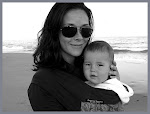As a sitter, one of the perks of the job is sometimes getting to travel along with the family on their vacations! I've done it a few times, and have picked up a few tips from experience that just might make your next vacation a little less stressful and a lot safer!
2. If your little one gets motion sickness in a car or on a plane, it's a good idea to bring an extra set of clothes, lots of wipes (useful any time, really) and have a plastic bag at the ready. (Just make sure the bag is kept away from babies at other times!)
3. On a plane, have a bottle ready and a pacifier on hand for when the pressure in the cabin becomes uncomfortable for baby. Sucking will help their ears pop, thus helping the Eustachian tube equalize the pressure on either side of the eardrum. Older kids can enjoy snacks--anything that they can chew and swallow. Yawning also helps.
4. If the kids aren't vomiting, they'll probably be whining. I like to play 'I Spy' with Oliver. Older kids can play the spelling version: "I spy with my little eye something beginning with the letter "G", and younger ones can guess by color: "I spy with my little eye something blue." Cell phones can also provide hours of entertainment, even without apps. Oliver loves flipping my cell open and pushing random numbers.
5. Most importantly, the same rules that apply at home should apply on vacation too. Always make sure kids are supervised near any bodies of water, and keep the lines of communication open between parents and sitter. On a vacation, in a different location, it's easy to lose track of who's in charge of whom. So double check! Is Oliver with his mother in the back yard or should I be watching him? Who's got the baby? Sometimes it's easy to assume that just because there are several adults on the premises that the kids are automatically being supervised, but that's not necessarily so. Decide--verbally--who's in charge, so that there's no confusion. It's not a bad idea to use a clock to designate shifts. Mom and Dad are watching the kids from 2 to 3, and then the sitter takes over until 6, for example. This way, you and your sitter can both relax and enjoy the vacation!
Hope these help!
Zoey, sitter to Nicholas, Oliver, and Vivienne
















